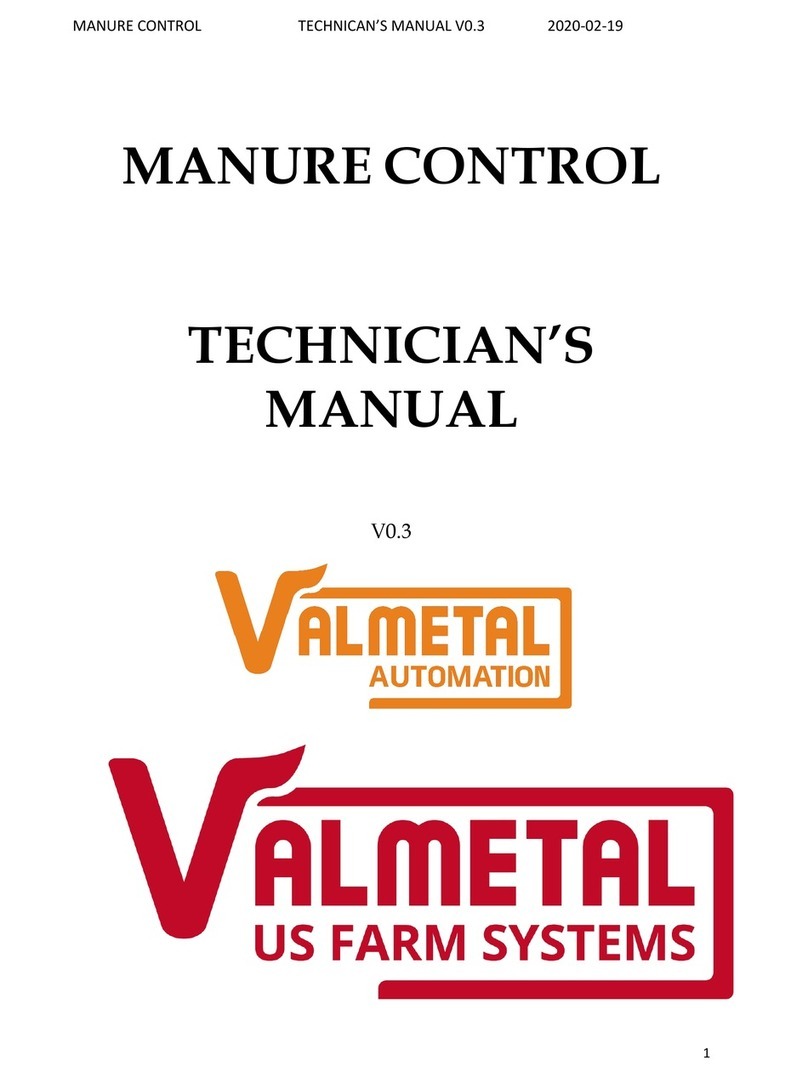4
2.2 OPERATING SAFETY
The Stationnary Vertical Mixer moving parts could
cause death or severe injury to persons coming in con-
tact with these parts. To help avoid serious accidents,
the following guidelines should always be followed.
1. Read and understand the Operator's Manual and
all safety signs before operating, servicing,
adjusting, repairing, unplugging or filling.
2. Be sure all safety shields are in good condition and
properly installed before operating, including driveline
shields.
3. Never climb onto Mixer or place hands in any
opening when the motor is running.
4. Before starting your Stationnary Vertical Mixer, make
sure that no one is inside the tub. Never allow anyone to
climb over or near the top of the mixer while it is in oper-
ation. The rotating vertical auger(s) armed with knives
will cut or sever resulting in death or severe injury to
anyone who should come in contact with the vertical
auger(s) while the machine is in operation.
5. Do not allow inexperienced or unqualified persons to
operate the mixer. Keep bystanders away from equip-
ment while it is in operation. Keep children a safe dis-
tance away. Operators of the Stationnary Vertical Mixer
must use common sense at all times.
6. Do not wear loose or floppy clothing while operating the
Stationnary Vertical Mixer. Loose clothing may become
entangled in moving parts or moving machinery and
cause severe injury or death.
7. Should a problem occur during operation of the
Stationnary Vertical Mixer, turn OFF motor, lock out
power at master power panel and wait for all moving
parts to stop before servicing, adjusting or repairing.
8. Know the location and function of the master
electrical shut-down should the need arise.
9. Use caution when working around the discharge area.
Never reach in, around, or over the discharge door(s).
Never place hands in any opening when in operation.
10. Never hand feed materials into mixer while it is running.
Pivoting augers with knives may cut or grab hands or
clothing, causing severe injury.
11. Never operate machine with a cracked, bent,
missing or broken knife.
12. Review safety instructions with all operators
annually.
2.3 MAINTENANCE SAFETY
1. Follow ALL the operating, maintenance and
safety informations in the manual.
2. Follow good Shop Practices
- Keep service area
clean and dry.
- Be sure electrical
outlets and tools
are properly
grounded
- Use adequate light
for the job at hand
3. Always turn OFF motor, lock out power at master
power panel and wait for all moving parts to stop
before servicing, adjusting, repairing or unplug-
ging.
4. If work must be performed inside the mixer, put a
protective cover over the knives.
5. Use caution when stepping inside the tub, floor
might be slippery.
6. Keep hands, feet, hair and clothing away from
moving and/or rotating parts.
7. Never wear ill-fitting, baggy or frayed clothing
when working around or on any of the drive sys-
tem components.






























